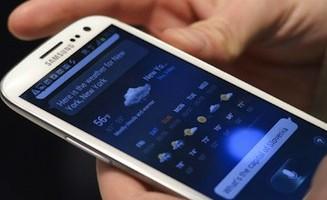
Based on the hype surrounding the Apple Watch and other devices, it sometimes seems like the technology industry is obsessed with wearables. Certainly the rapid cadence of smartwatches and fitness trackers hitting the market can make people assume that the devices are fast approaching ubiquitous market penetration. But that’s definitely not the case. Last year, according to researcher
Statista, roughly $2 billion was spent on wearables; compare that to the
$40 billion shelled out for smartphones during that same period. In addition, there are signs that the higher end of the wearables market, most notably smartwatches,
face considerable headwinds. “It’s still a very new market,” observed Bob Weber, president and owner of the Princeton, NJ, developer Weblications. “Wearables don’t have the penetration yet. There’s a limited number of things you can do right now because of the devices’ limitations.” But that doesn’t mean tech pros should place their wearable-development skills on the proverbial back burner. Statista sees the market’s value more than doubling over the next few years, to over $5 billion in 2018; research firm Nielsen, meanwhile, surveyed consumers and found that nearly half of them expressed interest in buying some sort of wearable tech “in the near future.” “The number of projects for this segment has doubled in our company over the last year,” said Gennady Nosenko, head of mobile development at First Line Software, a global developer headquartered in Lewes, Delaware. “I think that reflects the overall situation of the job market.”
New Skills Based on What You Already Know
Taking advantage of the slow-but-sure demand for wearable-app developers doesn’t mean you have to learn some exotic new language or methodology. While the devices themselves certainly impose new display and navigation limitations because of their size, the programming itself is largely done in native iOS for Apple devices or native Java for Android, Weber explained: “If you’re proficient programming Xcode for iPhone or iPad, programming for wearables is going to be a natural extension,” he said. However, Nosenko points out, developing for wearables requires a “wider usage of technologies” to ensure “better optimization and accuracy in implementation.” There are several issues to consider during a mobile development project, he added:
- The wearable device must interact properly with other mobile devices under iOS, Android and Windows Phone. Accordingly, “the firmware implementation and [Bluetooth Low Energy] protocol definition should be done in full accordance with all the specific requirements of the operating systems.”
- Wearable apps not only have different UX and UI principles; the devices themselves must be power-efficient. “Battery life is very critical when it comes to powering display, wireless modules and processing,” Nosenko said. Proceed accordingly.
- The use of Big Data principles on the back-end and by the mobile app itself is often necessary; wearables leverage more datasets via the cloud than you might initially expect.
So there’s more to coding for wearables than just knowing your way around the iOS or Android SDKs. “Knowledge of wireless protocols, understanding of RF principles from one side and expertise in Big Data architecture from the other (back-end) side are all part of designing and implementing a great final product,” Nosenko said. His advice to those wanting to get their feet wet: “Buy an Arduino or Raspberry Pi and play with it—both the hardware and the software.” He believes the results will be worth it. Nosenko predicts the ability to program apps for wearables “will be a must-have skill” for mobile developers in the future. “The Internet of Things is coming, and we can do nothing about that except be prepared,” he said.
 Based on the hype surrounding the Apple Watch and other devices, it sometimes seems like the technology industry is obsessed with wearables. Certainly the rapid cadence of smartwatches and fitness trackers hitting the market can make people assume that the devices are fast approaching ubiquitous market penetration. But that’s definitely not the case. Last year, according to researcher Statista, roughly $2 billion was spent on wearables; compare that to the $40 billion shelled out for smartphones during that same period. In addition, there are signs that the higher end of the wearables market, most notably smartwatches, face considerable headwinds. “It’s still a very new market,” observed Bob Weber, president and owner of the Princeton, NJ, developer Weblications. “Wearables don’t have the penetration yet. There’s a limited number of things you can do right now because of the devices’ limitations.” But that doesn’t mean tech pros should place their wearable-development skills on the proverbial back burner. Statista sees the market’s value more than doubling over the next few years, to over $5 billion in 2018; research firm Nielsen, meanwhile, surveyed consumers and found that nearly half of them expressed interest in buying some sort of wearable tech “in the near future.” “The number of projects for this segment has doubled in our company over the last year,” said Gennady Nosenko, head of mobile development at First Line Software, a global developer headquartered in Lewes, Delaware. “I think that reflects the overall situation of the job market.”
Based on the hype surrounding the Apple Watch and other devices, it sometimes seems like the technology industry is obsessed with wearables. Certainly the rapid cadence of smartwatches and fitness trackers hitting the market can make people assume that the devices are fast approaching ubiquitous market penetration. But that’s definitely not the case. Last year, according to researcher Statista, roughly $2 billion was spent on wearables; compare that to the $40 billion shelled out for smartphones during that same period. In addition, there are signs that the higher end of the wearables market, most notably smartwatches, face considerable headwinds. “It’s still a very new market,” observed Bob Weber, president and owner of the Princeton, NJ, developer Weblications. “Wearables don’t have the penetration yet. There’s a limited number of things you can do right now because of the devices’ limitations.” But that doesn’t mean tech pros should place their wearable-development skills on the proverbial back burner. Statista sees the market’s value more than doubling over the next few years, to over $5 billion in 2018; research firm Nielsen, meanwhile, surveyed consumers and found that nearly half of them expressed interest in buying some sort of wearable tech “in the near future.” “The number of projects for this segment has doubled in our company over the last year,” said Gennady Nosenko, head of mobile development at First Line Software, a global developer headquartered in Lewes, Delaware. “I think that reflects the overall situation of the job market.”


![Go to article Mastering Mobile Development's Landscape [DiceTV]](/binaries/small/content/gallery/dice/insights/2012/08/dice-tv-8-21-12-thumbnail.jpg)
